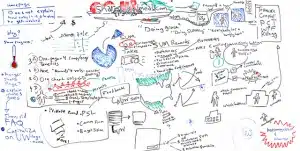How Nonprofits Can Produce And Measure Effective Digital Campaigns


Full Platform Overview Chat With Us



Full Platform Overview Chat With Us




There have never been more digital tools available to nonprofits than there are today. Email, social media and digital content allow for creative and cost-effective forms of fundraising, but pulling off an effective campaign can be challenging. Here is a simple guide to producing and measuring an effective digital campaign:
Without an offer, there is no campaign. It should be clear what it is you’re promoting, whether it’s a capital campaign, one-off event, call for volunteers or #GivingTuesday outreach. Everything starts with your offer! 
Before doing anything, it’s important to know what your goals for the campaign are. Ask yourself at least three questions:
Clear goals are essential not only to campaign measurement, but also to ensuring the campaign is produced in an appropriate manner.
For example, a campaign goal set should look something like this:
Defining a goal set such as this will also allow you to decide on the appropriate channel(s) to distribute your campaign. Using the example above, direct mail, email and telephone may be appropriate. Social media may not be, unless you know that several of your major gift donors follow you on Twitter or Facebook.
Don’t feel limited to just one target audience. Keep in mind, though, that the content and distribution method of the communications should be tailored to the individual target audience.
Once you’ve defined your offer and your goals for the campaign, it’s time to deploy the digital assets. Depending on your target audience, a multi-pronged approach may be necessary. You don’t have to limit yourself to just one email or one social media updates. For example, if you’re promoting a fundraising event, consider sending several emails in the weeks leading up to the registration deadline. Persistency in posting on social media may also be prudent, but try to avoid looking spammy. One update every other day or so should work well.
Now that the campaign has been deployed, it’s time to measure it’s effectiveness. Depending on the channels you used, you may have to pull in data from several sources in order to draw any conclusions. The main key performance indicators (KPIs) I look for are:
If you’re using Google Analytics, you can get a lot of the website visit data easily. Even if you aren’t using a social media management tool, social engagement can be tallied manually. Some email tools come with reporting that will let you know how many recipients opened and interacted with your emails.
Gather up your data and be prepared to dig in.
Download our Social Media Performance Scorecard to manually track and measure your social media metrics >>
Once you’ve compared actual performance versus your KPIs, it’s time to debrief. Did you hit your goals? Why or why not? Don’t be afraid to gather input from other staff members on what worked, what didn’t, and why.
If you followed the steps above, you should be well-equipped for your next campaign. Be sure to discard anything that you know didn’t work, test things you aren’t sure about, and continue doing the things that you know work. Within time, your campaigns will become well-oiled machines!
What kind of process do you follow when deploying email newsletters, social media campaigns and other online content? Let me know in the comments below!


Comments